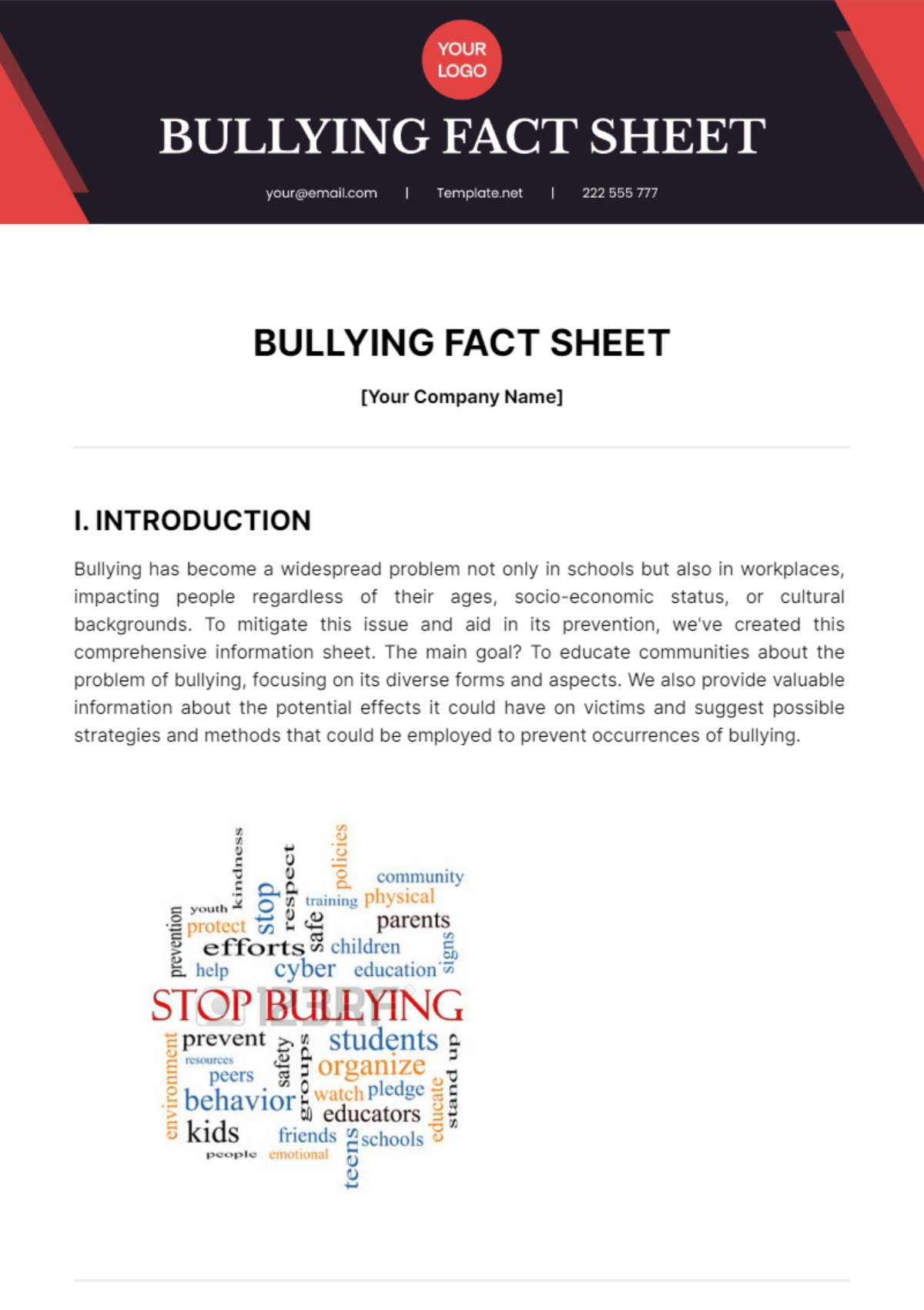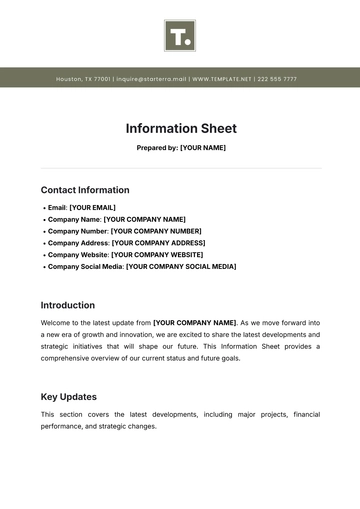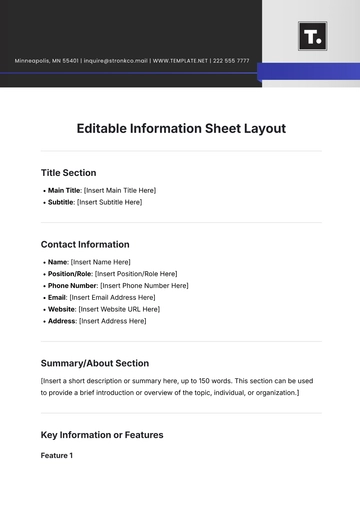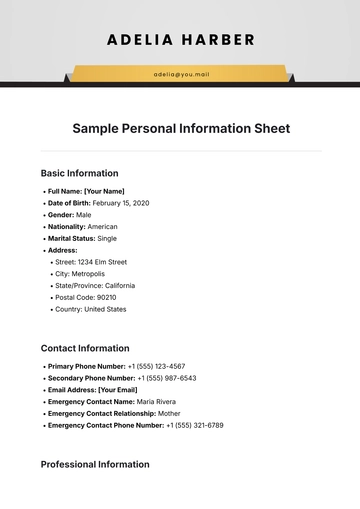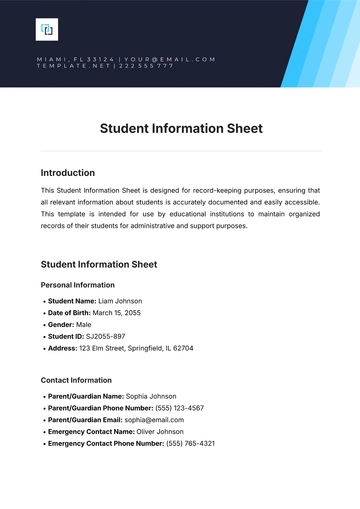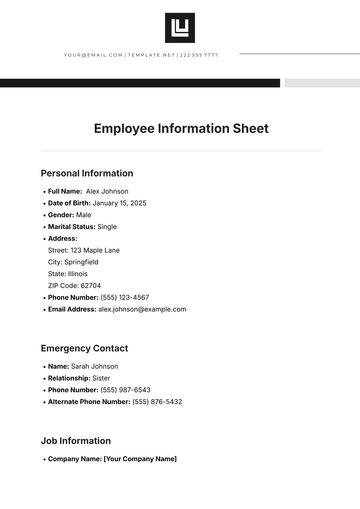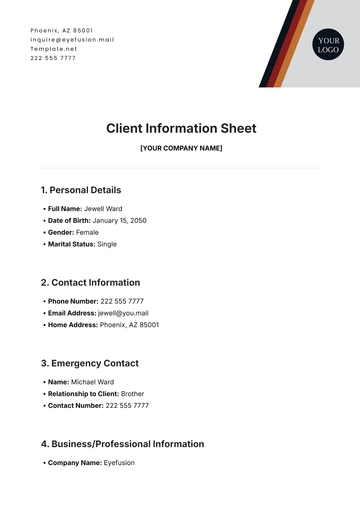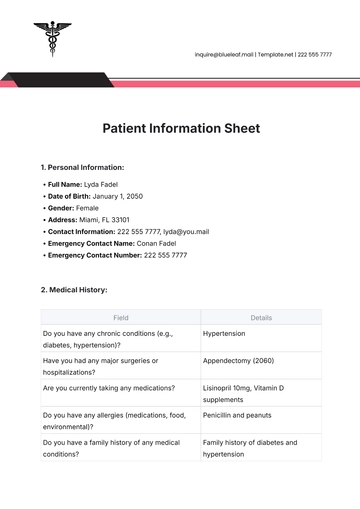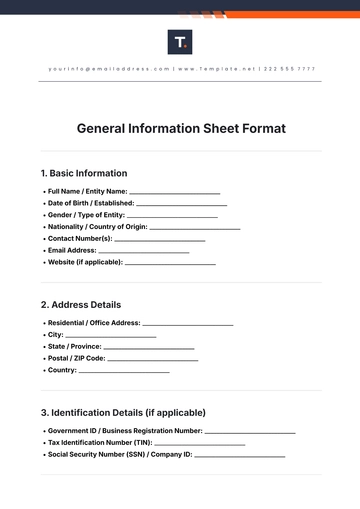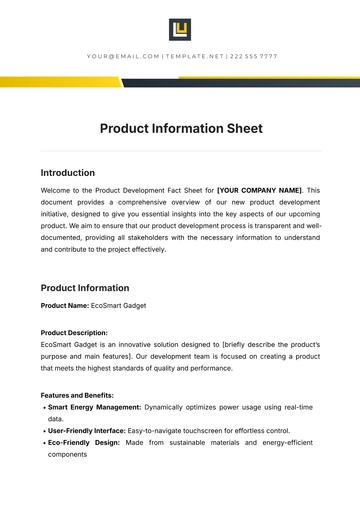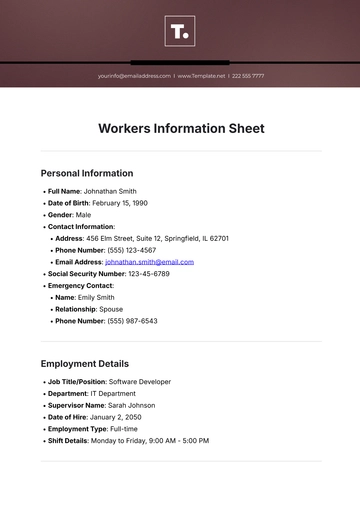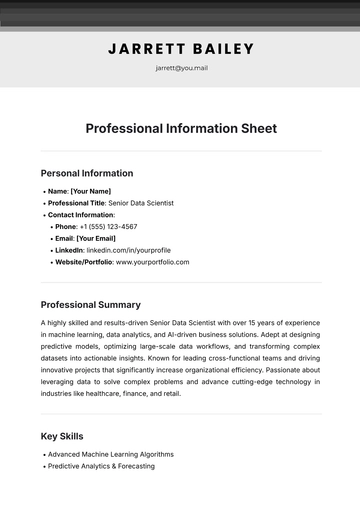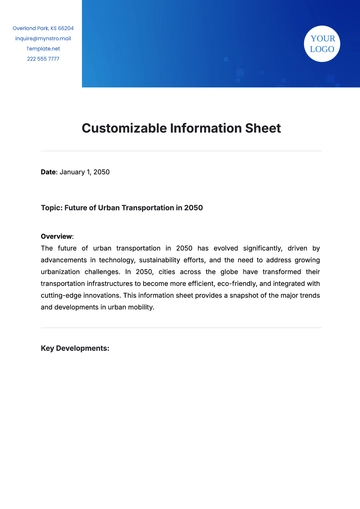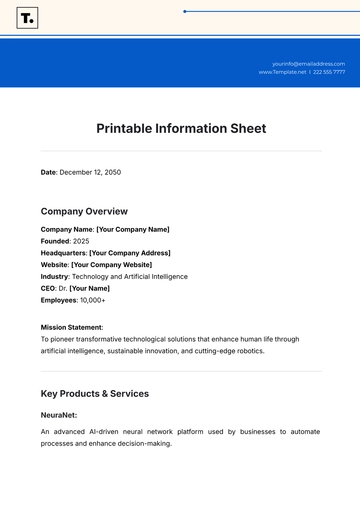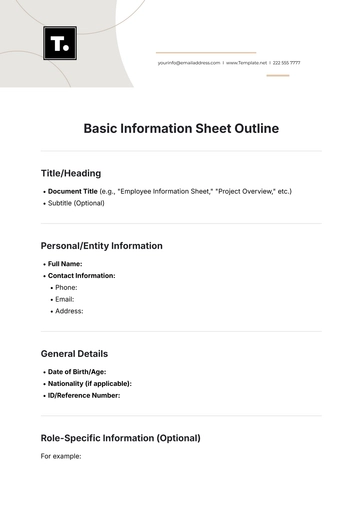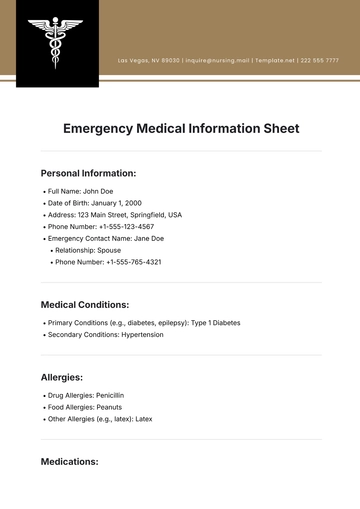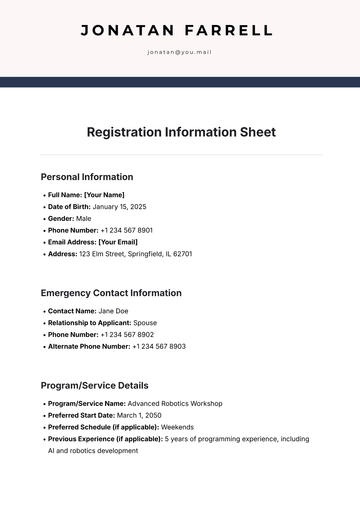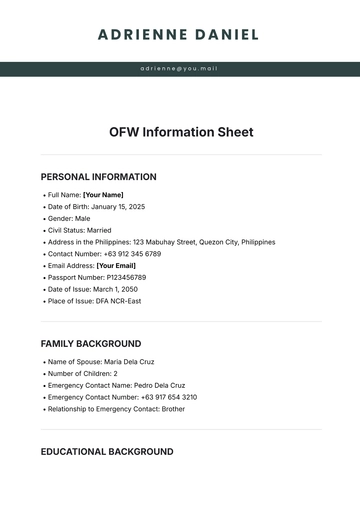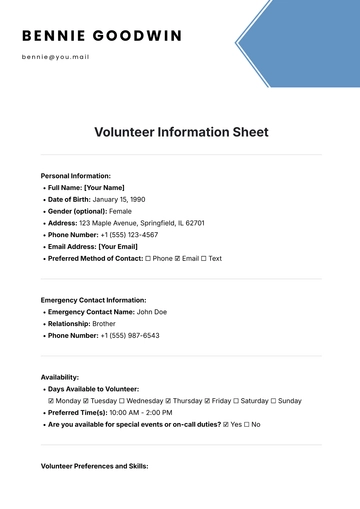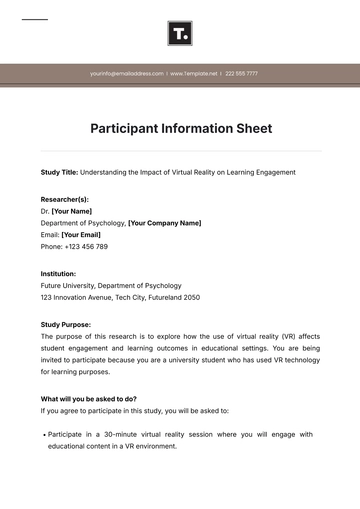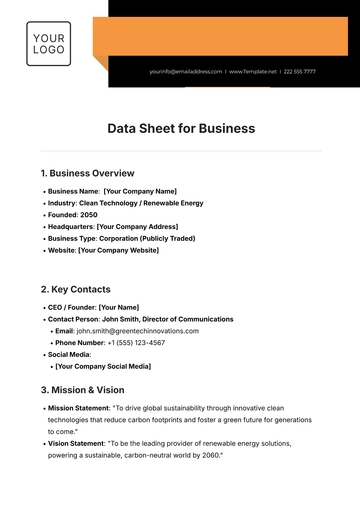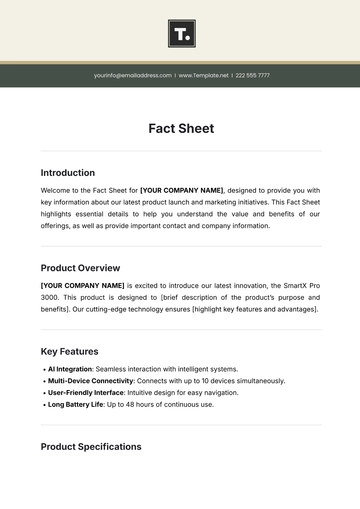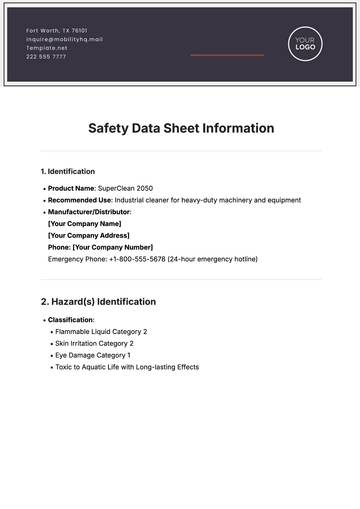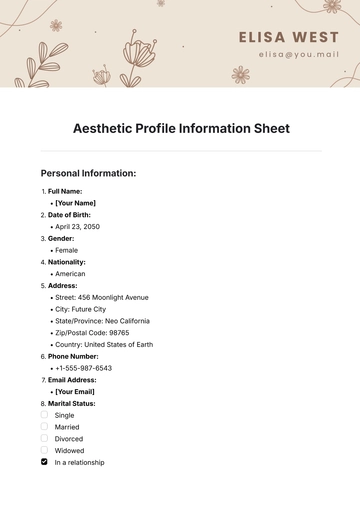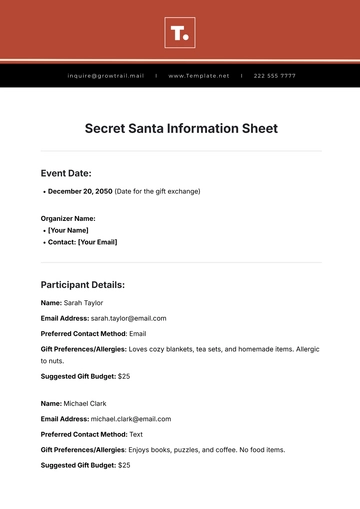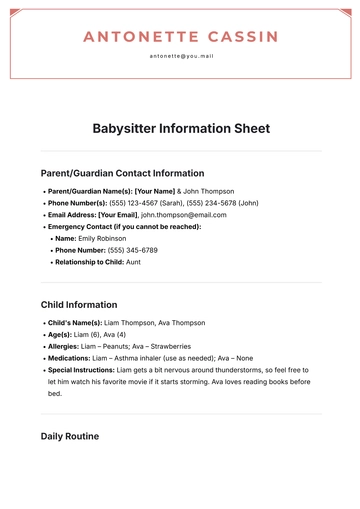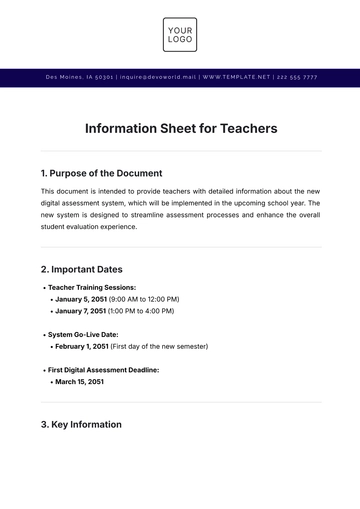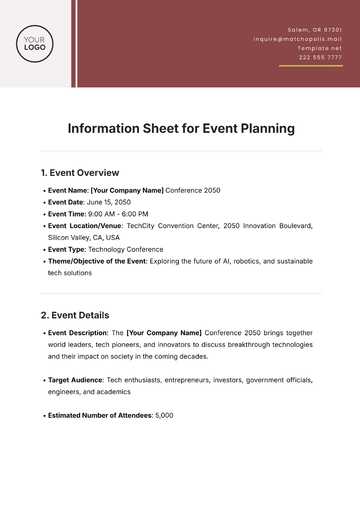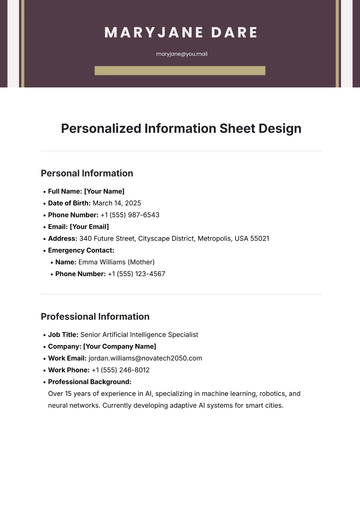BULLYING FACT SHEET
[Your Company Name]
I. INTRODUCTION
Bullying has become a widespread problem not only in schools but also in workplaces, impacting people regardless of their ages, socio-economic status, or cultural backgrounds. To mitigate this issue and aid in its prevention, we've created this comprehensive information sheet. The main goal? To educate communities about the problem of bullying, focusing on its diverse forms and aspects. We also provide valuable information about the potential effects it could have on victims and suggest possible strategies and methods that could be employed to prevent occurrences of bullying.

III. TYPES OF BULLYING
A. Physical Bullying
Physical bullying involves direct physical aggression towards the victim. Examples include: Hitting, Kicking, Pushing, and Tripping.
B. Verbal Bullying
Verbal bullying encompasses verbal attacks aimed at causing emotional harm. Examples include name-calling, Teasing, Insults, and Threats.
C. Social Bullying
Social bullying includes actions aimed at damaging social relationships or reputations. Examples include exclusion from social groups, Spreading rumors or gossip, Public humiliation, and Intentional embarrassment.
D. Cyberbullying
Cyberbullying occurs through electronic means, often via social media or messaging platforms. Examples include harassment via text messages or emails, Posting hurtful comments or rumors online, Sharing embarrassing photos or videos without consent, and Creating fake profiles to impersonate or mock the victim.
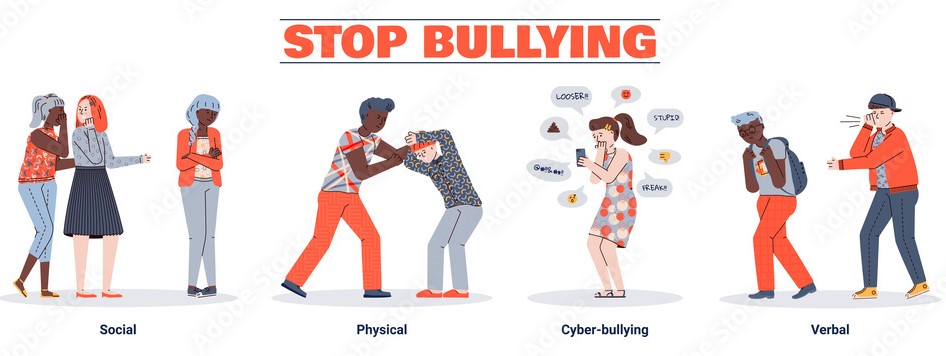
IV. IMPACTS OF BULLYING
Bullying can have profound effects on individuals, including:
Emotional distress: Anxiety, depression, fear, and low self-esteem.
Physical health issues: Headaches, stomachaches, and sleep disturbances.
Academic or work performance decline: Difficulty concentrating, absenteeism, and decreased productivity.
Relationship problems: Difficulty trusting others, social withdrawal, and challenges in forming new relationships.
V. SIGNS OF BULLYING
A. Signs for Parents/Teachers
Parents and teachers should watch for the following signs:
Unexplained injuries or damage to personal belongings
Changes in behavior or mood, such as becoming withdrawn or anxious
Avoidance of school or work, frequent complaints of illness, or requests to stay home
Decrease in academic or work performance, sudden decline in grades or productivity
B. Signs for Coworkers/Supervisors
Colleagues and supervisors should be alert to the following signs:
Withdrawal from social interactions, reluctance to participate in team activities or meetings
Increased absenteeism, frequent lateness, or leaving work early without explanation
Decrease in productivity, missed deadlines, or errors in work quality
Visible signs of distress, such as tearfulness, agitation, or mood swings
VI. PREVENTIONS STRATEGIES
A. Prevention in Schools
Schools can implement the following strategies to prevent bullying:
Establish clear anti-bullying policies outlining expectations and consequences
Educate students and staff about bullying, its effects, and how to intervene safely
Encourage open communication channels between students, teachers, and parents
Implement peer support programs, mentoring initiatives, or conflict resolution training
B. Prevention in Workplaces
Workplaces can adopt the following strategies to prevent bullying:
Develop comprehensive anti-bullying policies and procedures, including reporting mechanisms
Provide training on recognizing and addressing bullying behavior for all employees
Foster a culture of respect and inclusivity, emphasizing zero tolerance for bullying and harassment
Encourage reporting and swift intervention in cases of bullying, ensuring confidentiality and protection for whistleblowers

VII. REPORTING PROCEDURES
It is essential to have clear reporting procedures in place for addressing bullying incidents:
Encourage individuals to report bullying promptly and confidentially to a designated authority figure or HR representative
Provide multiple reporting options, such as anonymous hotlines, online forms, or in-person meetings
Ensure that reports are taken seriously and investigated promptly, with appropriate follow-up and support provided to victims
Implement appropriate disciplinary measures for offenders, including counseling, training, or termination as warranted
VIII. RESOURCES
Community members can access various resources for support and assistance:
Local counseling centers: Provide confidential counseling services for individuals affected by bullying
National bullying helplines: Offer free, confidential support and guidance for victims of bullying and their families
Online support groups: Provide a safe space for individuals to share their experiences, seek advice, and connect with others who have been bullied
Educational materials and toolkits: Offer valuable resources for schools, workplaces, and community organizations on bullying prevention, intervention, and support strategies
IX. CONCLUSION
Bullying is a complex issue that requires collective efforts to address effectively. By raising awareness, implementing preventive measures, and providing support to those affected, we can create safer and more inclusive environments for all.
Fact Sheet Templates @ Template.net
